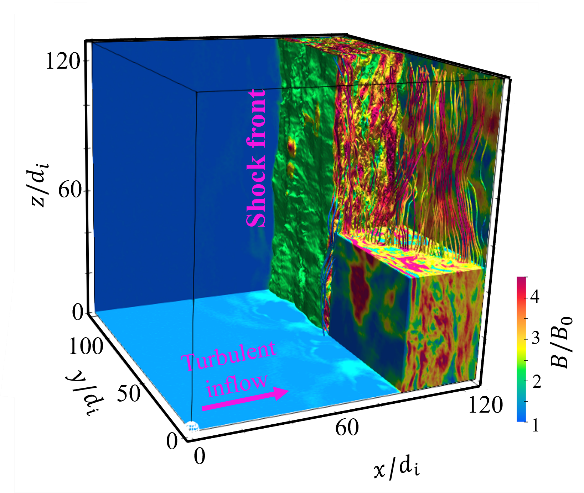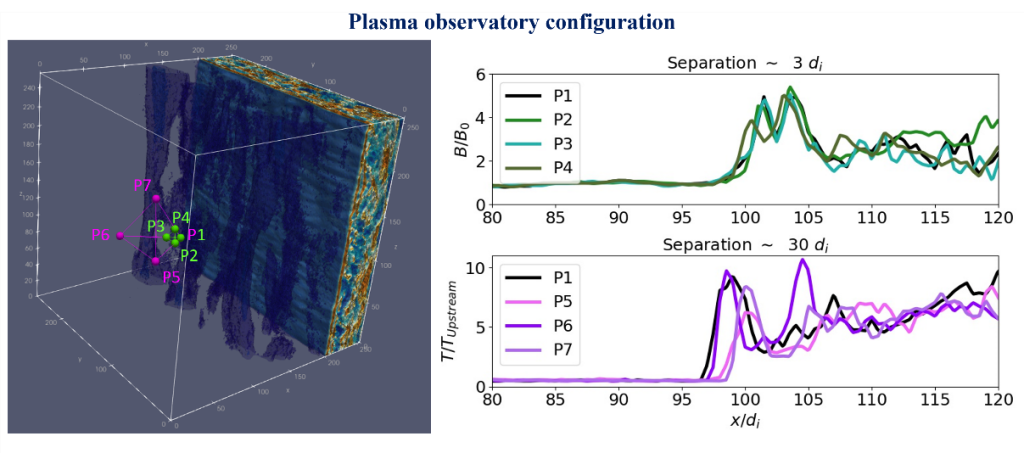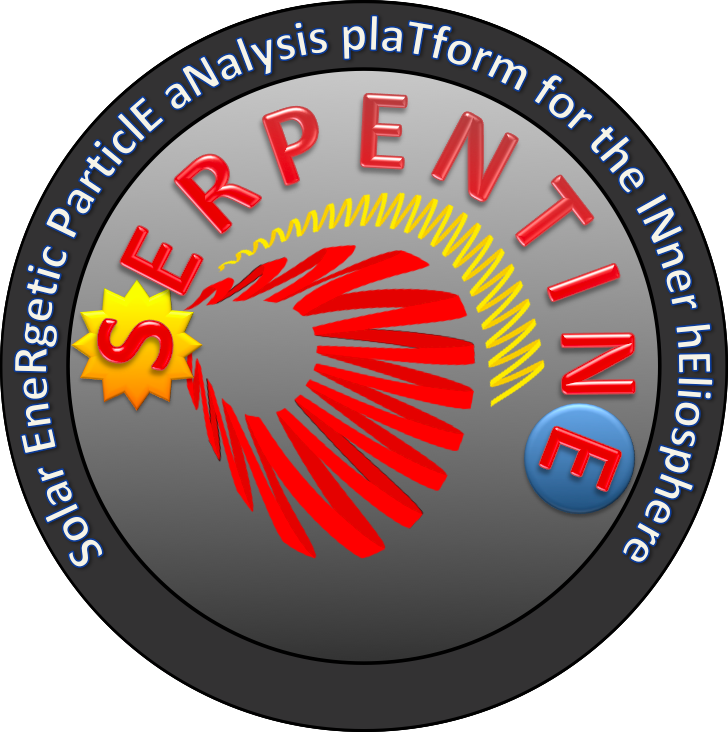
Shock waves and turbulence are ubiquitous in our Universe, where they play a fundamental role in explaining many observed phenomena. In particular, the complex, often spectacular interaction between shocks and plasma turbulence is a very promising pathway leading to the production of accelerated particles, as well as a fundamental ingredient to understand how energy can be dissipated in astrophysical systems.
A novel, three-dimensional modelling of a shock wave interacting with pre-existing plasma turbulence was presented in a paper recently accepted in the Monthly Notices of the Royal Astronomical Society journal. Such numerical efforts are invaluable to support the interpretation of several direct and remote observations, and to contribute to an evolving theory of particle acceleration at shocks.
The study, led by D. Trotta (member of the SERPENTINE consortium), addresses the micro-structuring present at a shock transition with typical heliospheric parameters using simulations resolving the small-scale (hundreds of kms) behavior of such shocks. The authors studied how shock-induced irregularities interact with the irregularities induced by turbulence. The emerging picture is a complex shock front, in which many mechanisms of energy dissipation take place. A simulation snapshot reconstructing the “complex face” of the shock is shown in Figure 1 (adapted from Figure 1 of the paper).

The modelling effort was also put in the context of spacecraft observations, elucidating the role of novel cross-scale, multi-spacecraft measurements in resolving shock front irregularities at different scales, in support for future missions such as the imminent NASA’s HelioSwarm mission, and Plasma Observatory, a space mission proposal candidate to the next M7 call of the European Space Agency. To this end, “digital spacecraft twins”, mimicking real satellite measurements, were used in the simulation domain, to address the potential capabilities of plasma observatory to resolve such an interesting behaviour operating at Earth’s bow shock (Figure 2).
A preliminary version of the accepted manuscript has been published at: https://doi.org/10.1093/mnras/stad2384
